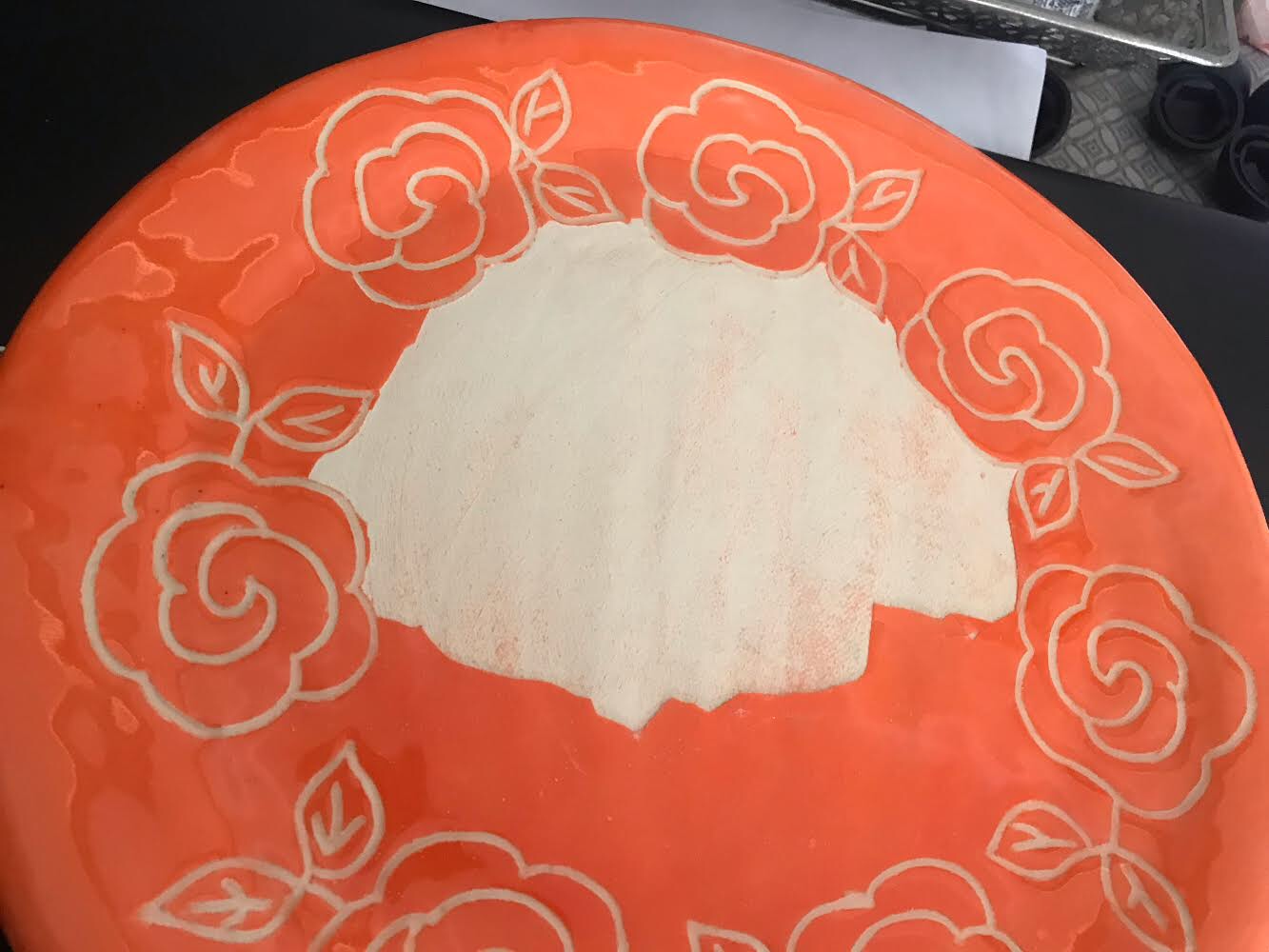This pottery glaze is not flaking off - the underglaze is.
Pure ceramic stain powders don't melt at typical pottery temperatures so they cannot bond with clay body surfaces. They don't suspend in water and don't harden on drying. Pure insight-live.com/glossary/182">stains contribute only one ceramic property: Color! Commercial underglazes sold in jars dilute stains into a recipe of materials, a 'base medium', designed to impart the missing properties. Unfortunately, consider a problem: Blue stains are fluxes and potent at low percentages. Orange stains (and others) are refractory and require much higher percentages. But for convenience underglaze manufacturers will want to use the same medium and percentage pigment to make an entire line of underglazes. That causes the problem seen here - flaking is happening at the interface between the body and orange underglaze. This underglaze recipe needs more frit (or a more potent one) so that enough melting occurs to create a better bond. For some colors it can thus be an advantage to make your own underglazes.
Pages that reference this post in the Digitalfire Reference Library:
Creating a Non-Glaze Ceramic Slip or Engobe, An engobe is shivering off the rim of a low temperature mug, Thickly applied slips must fit the body and each other, Underglaze, Body glaze Interface

This post is one of thousands found in the Digitalfire Reference Database. Most are part of a timeline maintained by Tony Hansen. You can search that timeline on the home page of digitalfire.com.
